Education
10 Historic Palaces and Forts in Punjab You Must Visit
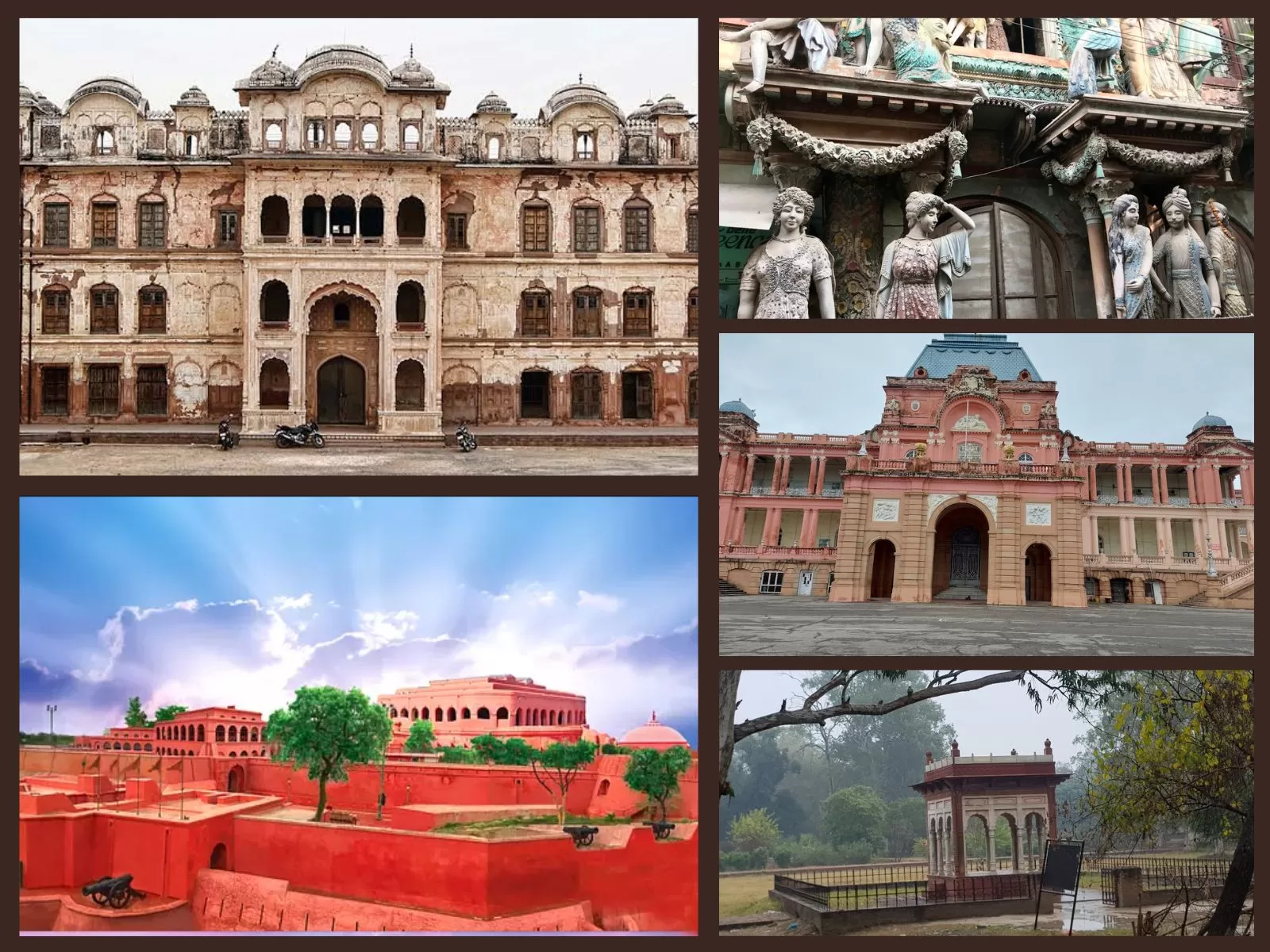
Punjab, known as the Land of Five Rivers, is not only famous for its vibrant culture, delectable cuisine, and warm-hearted people but also for its rich historical heritage. The state is dotted with numerous historic palaces and forts that narrate tales of valor, grandeur, and architectural excellence. In this article, we will take you on a virtual tour of some of the most magnificent palaces and forts in Punjab, India.
1. Qila Mubarak, Patiala
Our journey through Punjab’s historic palaces and forts begins with the Qila Mubarak in Patiala. Qila Mubarak, located in Patiala, Punjab, India, is a significant fortress showcasing Sikh architecture.

Image by Humble UK
Its history dates back to 1763 when Sidhu Jat ruler Baba Ala Singh founded it as a mud fortress. Later, he reconstructed it with baked bricks. Interestingly, it was built atop an existing Mughal fortress created by Governor Hussain Khan.
The complex, spread across 10 acres, includes the residential palace of the Royal family of Patiala. It also has guest houses and the majestic Darbar Hall. An underground sewerage system adds to its historical significance.
Qila Androon, an integral part of the complex, boasts 13 royal chambers. These chambers are adorned with stunning mural paintings depicting scenes from Hindu mythology in the unique Patiala art style.
Meanwhile, the Darbar Hall houses a collection of rare artifacts like cannons, swords, shields, and even daggers associated with Guru Gobind Singh.
Despite its historical value, the 300-year-old Qila has suffered extensive damage. It was also listed among the “most endangered monuments” by the World Monuments Fund in 2004.
Moreover, restoration efforts are underway to preserve this cultural gem for future generations. It has been supported and funded by various organizations including the Indian National Trust for Arts and Cultural Heritage and the Archaeological Survey of India
2. Bahadurgarh Fort, Patiala
Bahadurgarh Fort, located in Patiala, Punjab, is a historic marvel that stands as a testament to the region’s rich heritage. This fort was constructed in the 17th century by Nawab-Saif-Ud-Din Mahmud in the year 1658. Later, it was renovated by Maharaja Karam Singh of the Patiala dynasty in 1837. This fort was completed in 1945 with a cost of Rs. 1 lakh.
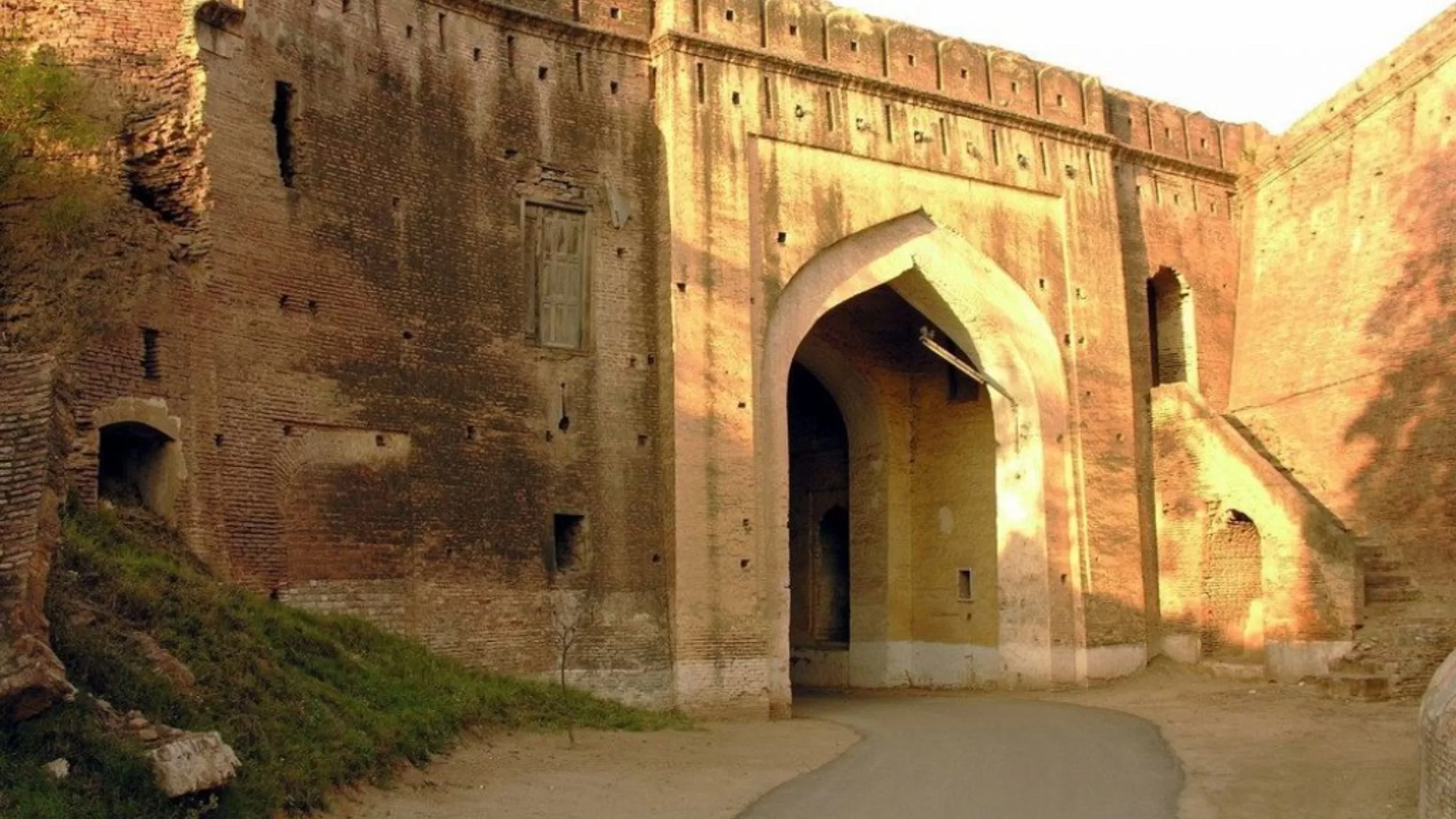
Image by Sandeep Mittal
This fort is a remarkable blend of Mughal and Rajput architectural styles. It was earlier called Saifabad and the tomb of Nawab Saif Khan is also located at a short distance from the fort.
After the completion of the renovation, it was named after the Ninth Guru Shri Teg Bahadur Ji. The fort is sprawling on an area of around 21 square kilometers and is in a circular shape. It is surrounded by two ramparts.
Bahadurgarh Fort is not only a visual treat for history enthusiasts but also offers a glimpse into the opulent lifestyle of the Patiala royals. A visit to this fort is a journey back in time, providing a deeper appreciation for Punjab’s rich and storied past.
3. Ram Bagh Palace, Amritsar
Ram Bagh is a historic garden located in Amritsar, Punjab, India. It was established during the reign of Maharaja Ranjit Singh and is renowned for its picturesque beauty. At the heart of this garden lies Ram Bagh Palace, also known as Ram Bagh Mahal.

Image by Dikshant Rathod
This palace served as Maharaja Ranjit Singh’s summer residence. Completed in 1831, the palace is named in honor of Guru Ram Das, the fourth guru of the Sikh faith, who founded the city of Amritsar.
Ram Bagh and its associated structures, including the palace, hold significant historical and cultural importance. The entire Ram Bagh complex, encompassing the palace and other architectural landmarks, enjoys dual recognition as both a state-protected monument and a monument of national importance.
However, the Ram Bagh complex has been embroiled in a prolonged legal dispute, which has had a detrimental impact on its preservation and restoration efforts. This legal battle has posed challenges to the conservation of this historical gem, which stands as a testament to the rich heritage and architectural splendor of the region.
4. Gobindgarh Fort, Amritsar
Gobindgarh Fort, situated in the heart of Amritsar, Punjab, is a significant historical military stronghold that holds a rich and diverse history.
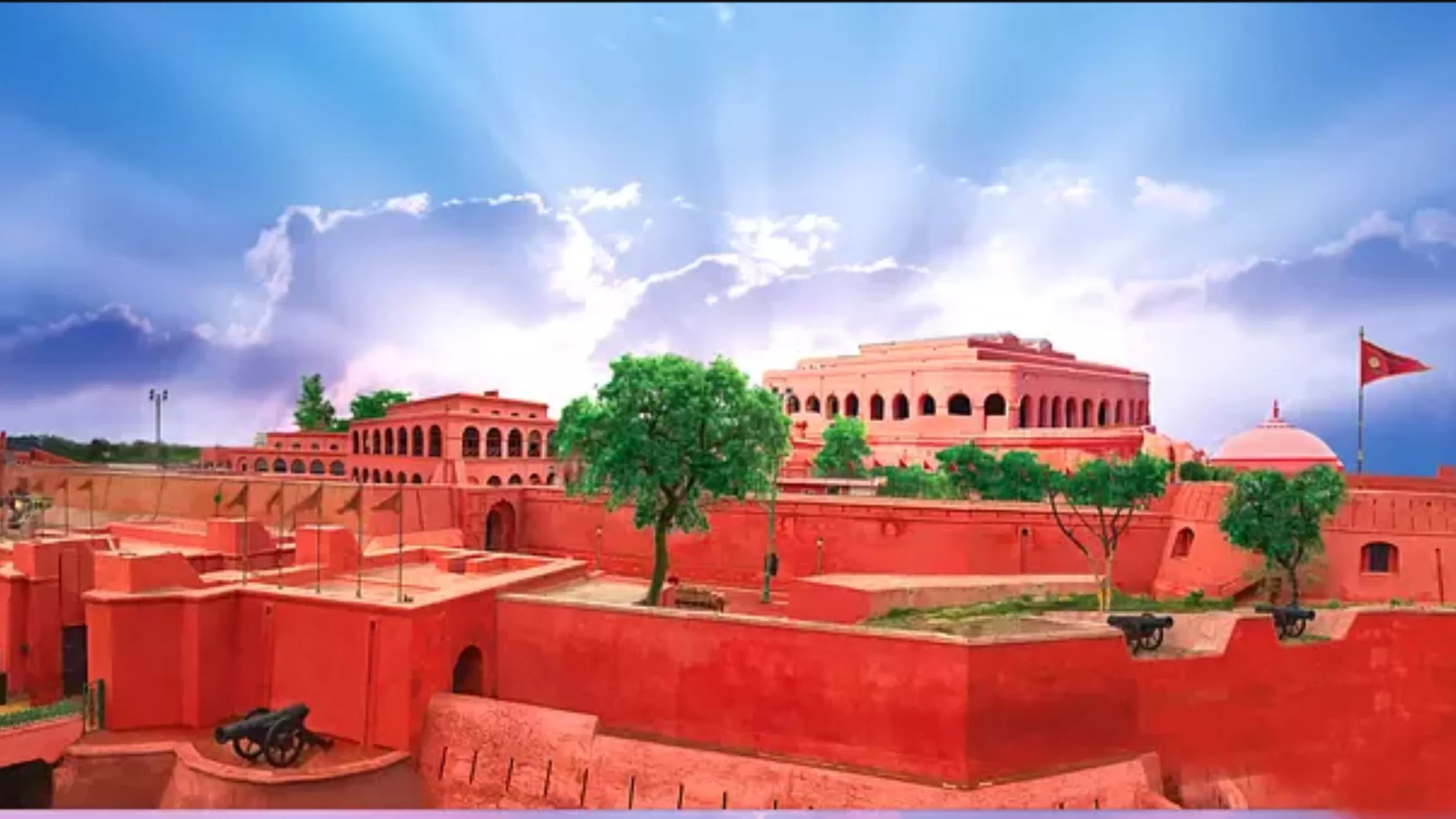
Image by Gobindgarh Fort
Originally known as the “Bhangian da Killa,” it was founded in the 18th century by the Bhangi Misl of Dhillon Jats rulers. However, in the early 19th century, Maharaja Ranjit Singh renamed it in honor of Guru Gobind Singh, the 10th Sikh guru.
This imposing fort is constructed in a square pattern, boasting a 1,000-meter perimeter, entirely crafted from bricks and lime. It was armed with 25 cannons along its ramparts and remained under the control of the Bhangi rulers until 1805.
Subsequently, from the mid-19th century, until India gained independence in 1947, the British army occupied the fort, implementing various defensive enhancements to adapt to evolving weaponry technology.
In recent years, Gobindgarh Fort has transitioned from a military base to a cultural treasure open to the public since February 10, 2017.
Today, it is being transformed into a museum and theme park, serving as a repository of Punjab’s rich history, making it a must-visit destination for those interested in India’s vibrant past.
5. Sheesh Mahal, Patiala
Sheesh Mahal of Patiala is a dazzling architectural gem. The “Sheesh Mahal” translates to “Palace of Mirrors,” and true to its name, this palace is a masterpiece of intricate mirror work.
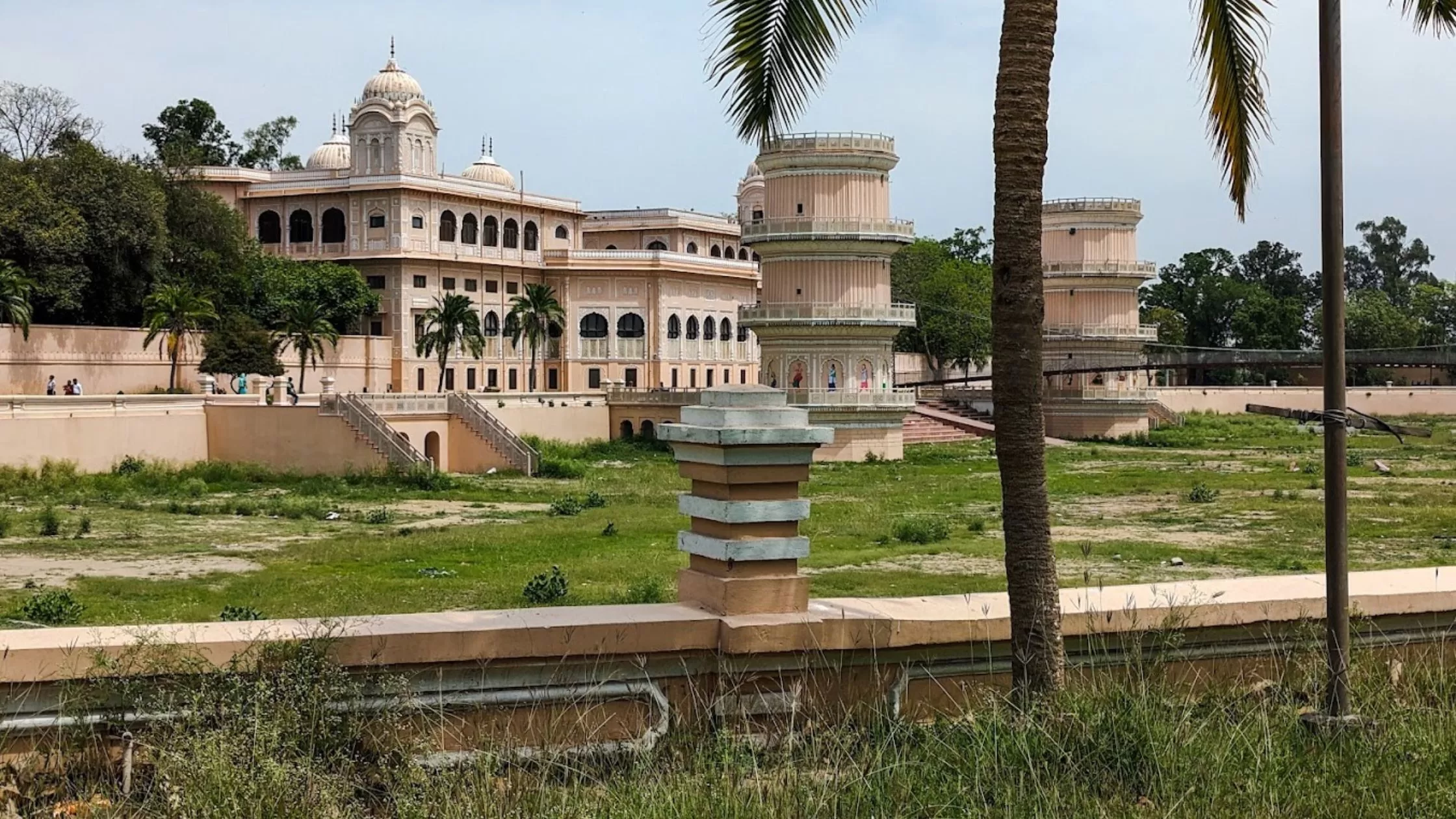
Image by Bhagirath Khuman
Constructed in 1847 by Maharaja Narinder Singh, the Sheesh Mahal features walls and ceilings adorned with countless pieces of mirror. These mirrors create a breathtaking kaleidoscope of reflections.
The palace’s design is a harmonious fusion of Rajasthani and Mughal architectural styles. It showcases the artistic finesse of the craftsmen of that era.
Visiting Sheesh Mahal is like stepping into a world of opulence and beauty, where every inch is a testament to the artistic and architectural grandeur of Punjab’s royal heritage. It is a must-visit destination for those seeking to immerse themselves in the history and splendor of Patiala.
6. Moti Bagh Palace, Patiala
Moti Bagh Palace, also known as the Pearl Garden Palace, is a historic gem located in Patiala, India. It was constructed in 1847 by Maharaja Narinder Singh at a considerable cost of five lakhs of rupees. This palace holds a rich legacy in the region. It’s a testament to the opulence and glory of the Patiala royal family.
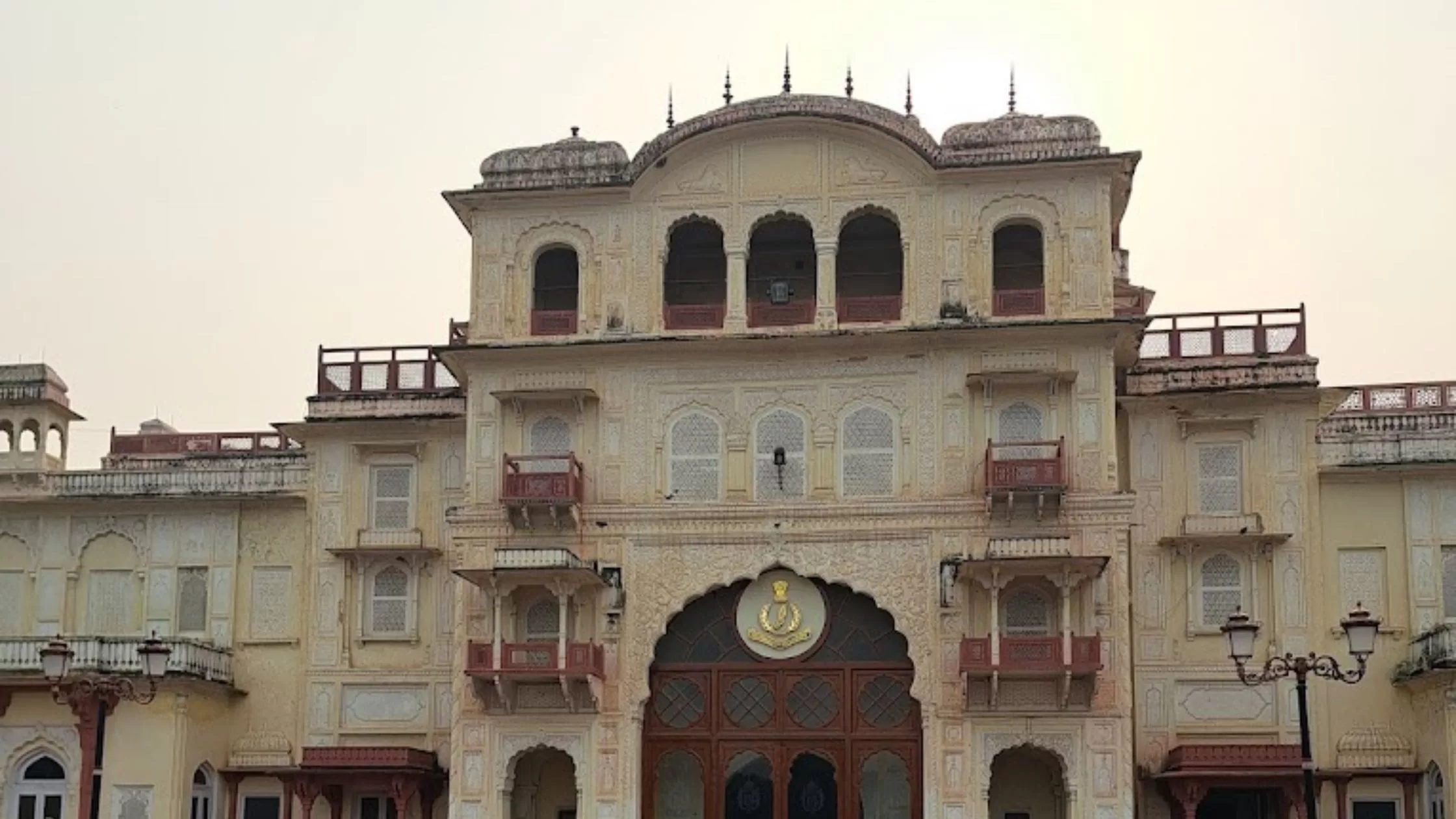
Image by Himanshu Rao
The palace complex consists of two main parts: the Old Moti Bagh Palace and the New Moti Bagh Palace. The former, built by Maharaja Narinder Singh, is one of the largest residencies in Asia and currently houses the Netaji Subhas National Institute of Sports (NIS), playing a pivotal role in promoting sports and physical education in India.
On the other hand, the New Moti Bagh Palace serves as the residence of the former Chief Minister of Punjab, Captain Amarinder Singh, showcasing the enduring connection between the royal heritage and contemporary politics in the region.
Moti Bagh Palace, with its historical significance and modern-day functions, continues to be a symbol of Patiala’s rich cultural and political heritage.
7. Rajmahal, Faridkot
The ‘Raj Mahal,’ a royal palace, was constructed during the rule of Maharaja Bikrama Singh between 1885 and 1889. Notably, it was under the supervision of the then Crown Prince, who later became Maharaja Balbir Singh.
Maharaja Balbir Singh was also the first to inhabit this splendid palace. The palace spans nearly 15 acres and boasts a stunning French design that stands out amidst the semi-desert landscape of the region. The splendor of the palace is enhanced by its expansive grassy lawns, creating a truly majestic setting.
The entrance to this architectural marvel is known as the “Raj Deori,” itself a heritage building with a rich history. Today, it houses the Balbir Hospital, adding a modern touch to the historical significance of the structure.
The ‘Raj Mahal’ and its associated heritage, including the ‘Raj Deori,’ serve as proof of the rich cultural and architectural heritage of the region. It offers a glimpse into the opulence of a bygone era.
8. Jagatjit Palace, Kapurthala
Jagatjit Palace, located in Kapurthala, Punjab, is a magnificent architectural marvel that exudes royal opulence. It was built in the early 20th century by Maharaja Jagatjit Singh of Kapurthala. This grand palace is a stunning blend of Indo-Saracenic and French architectural styles.

Image by Arundeep Kamboj
Today, Jagatjit Palace has found a new purpose as it houses the Sainik School, dedicated to training young boys for the National Defense Academy. This transformation has preserved the historical significance of the palace while ensuring its continued use for a noble cause – nurturing future defenders of the nation.
The fusion of history, art, and education within its walls adds a unique layer of significance to the palace.
It stands as a symbol of both Kapurthala’s regal heritage and its commitment to shaping young minds for the service of the country. Jagatjit Palace continues to inspire awe and reverence for its timeless beauty and evolving purpose.
9. Phillaur Fort, Jalandhar
Phillaur Fort, also known as Maharaja Ranjit Singh Fort, is situated along the Grand Trunk Road in Phillaur, Punjab, India. Its historical significance dates back to the reign of Shah Jahan, who initially constructed an Imperial Sarai at this location.
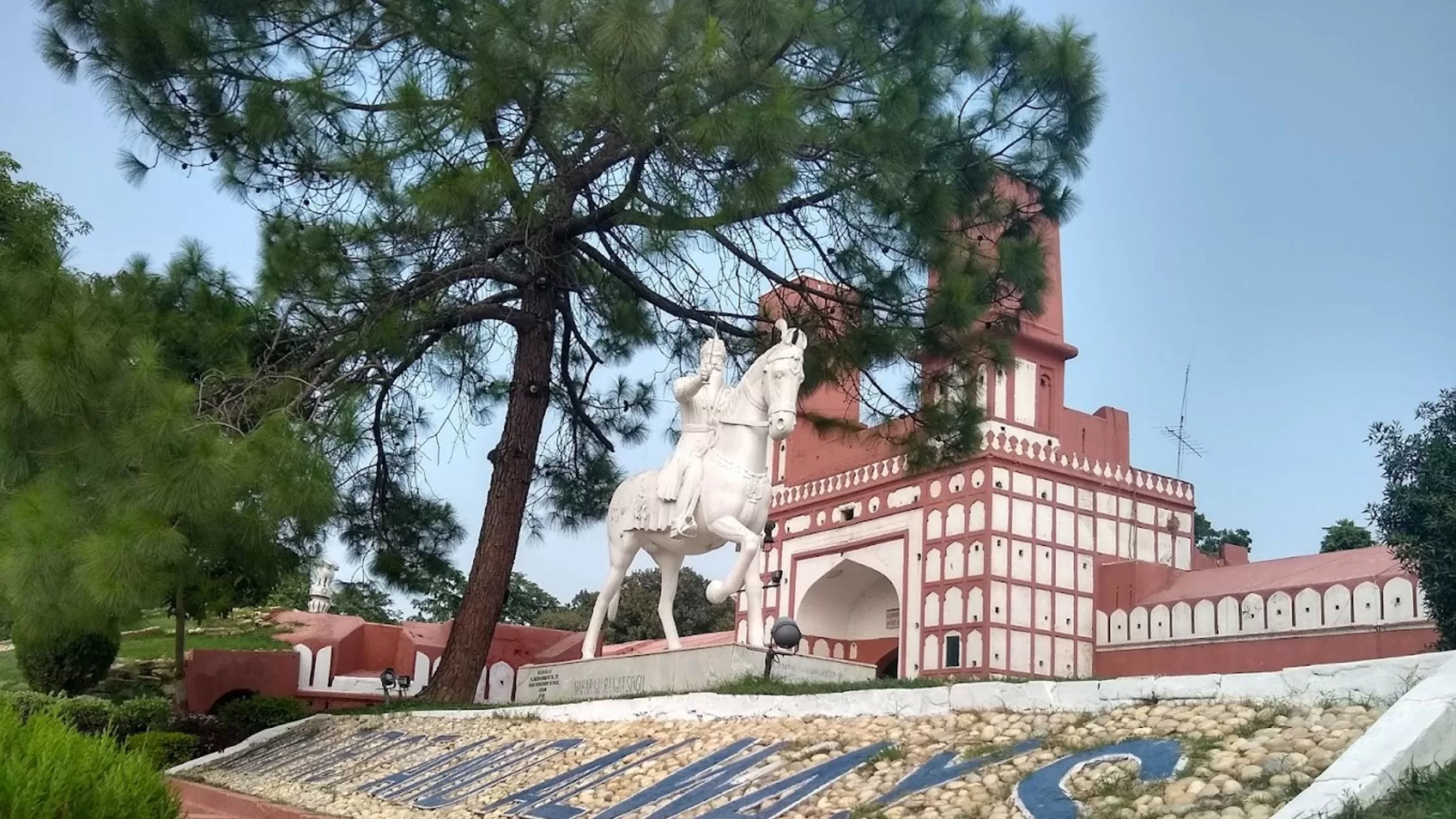
Image by Jitender Jit Singh
The fort was rebuilt under the rule of Maharaja Ranjit Singh in 1809. It was a work of architectural expertise of Dewan Mohkam Chand, aided by French and Italian generals in Ranjit Singh’s service. The fort’s construction was a response to the British, who had erected a fort in nearby Ludhiana.
However, in 1846, after the British victory at the Battle of Aliwal, they gained control of Phillaur Fort. It remained under military control until 1890 when it was handed over to civil authorities. Eventually, it is now serving as a police training center.
In 1973, it was renamed the ‘Maharaja Ranjit Singh Fort‘ by the Punjab Government. Since 1981, it has been utilized as the Maharaja Ranjit Singh Punjab Police Academy.
The fort holds religious significance for local Muslims as it houses the Shrine of Pir Baba Abdullah Shah Ji. It also has tombs of various Muslim figures and members of Shah Shuja’s family.
10. Sheesh Mahal, Hoshiarpur
In 1911, Lala Hans Raj Jain commissioned the construction of a remarkable monument known as Sheesh Mahal. It translates to “Palace of Glass” in English.
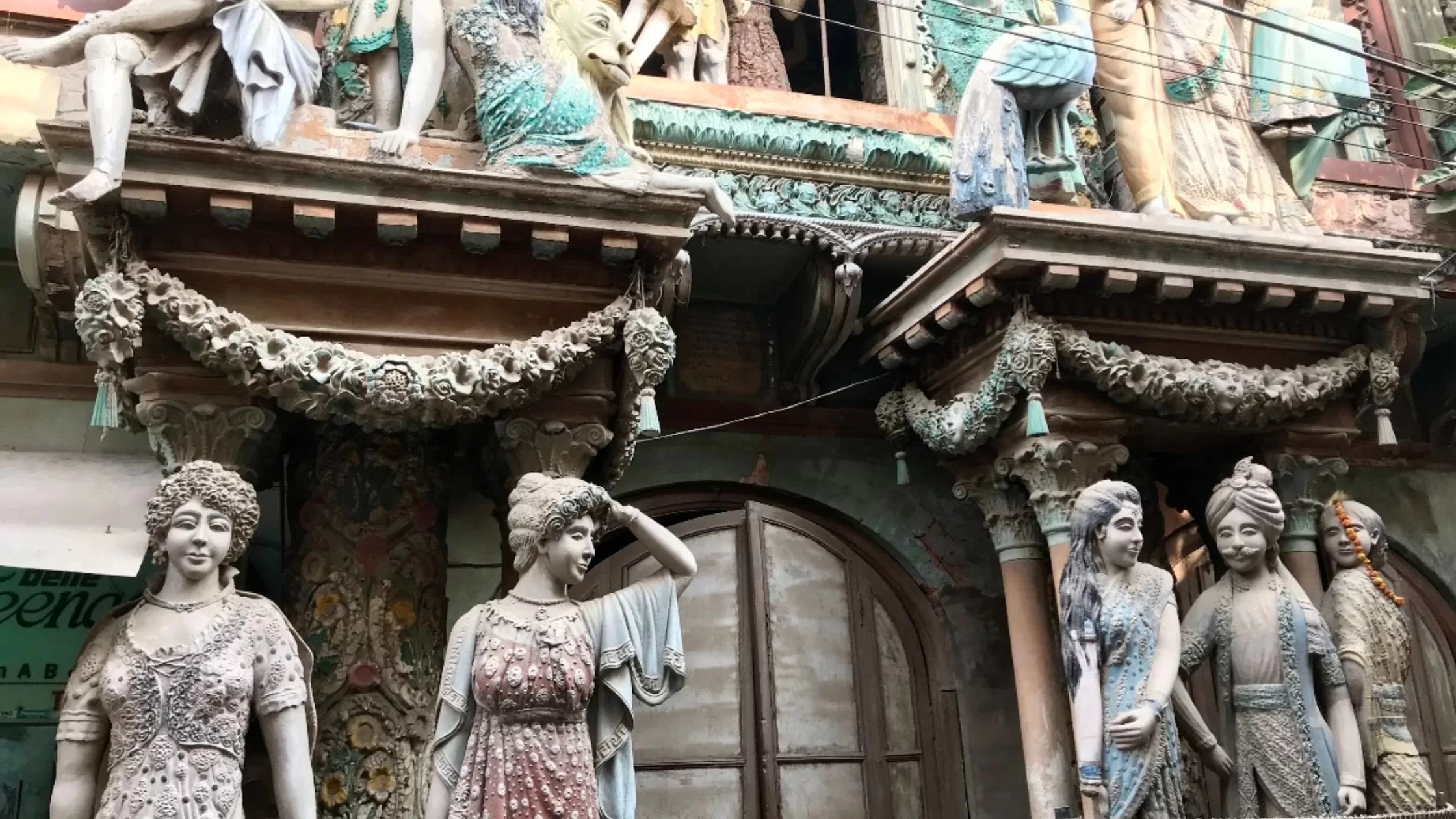
Image by YS Bedi
This magnificent palace is distinguished by its extensive use of glass for both interior walls and ceilings. Inside, on the first floor, you’ll find intricate paintings that vividly depict the coronation ceremony of King George V. These artworks offer a glimpse into the historical significance of the era.
On the ground floor of Sheesh Mahal, you’ll discover a fascinating collection of statues dedicated to various gods and goddesses. These sculptures reflect the rich cultural and religious diversity of the region.
Sheesh Mahal is not only a marvel of architectural beauty but also a place where history and spirituality converge. It offers visitors a unique and enchanting experience. It also stands as a testament to the artistry and historical heritage of the time it was built.
Ending Note
Punjab offers a captivating journey through time as you explore its historic palaces and forts. These forts in Punjab have witnessed the dynasties, battles, and cultural influences that have shaped the state’s identity over the centuries.
From the glory of Qila Mubarak in Patiala to the spiritual significance of Sheesh Mahal in Hoshiarpur, each site has a unique story to tell. Along with several other famous things of Punjab, these forts invite you to immerse yourself in Punjab’s rich and diverse heritage.
So, plan your visit and embark on a journey that will not only educate you about history but also leave you enchanted by the charm of Punjab’s past.
Daily News
CAT Exam Analysis Slot 3: Students Face Tough QA Section
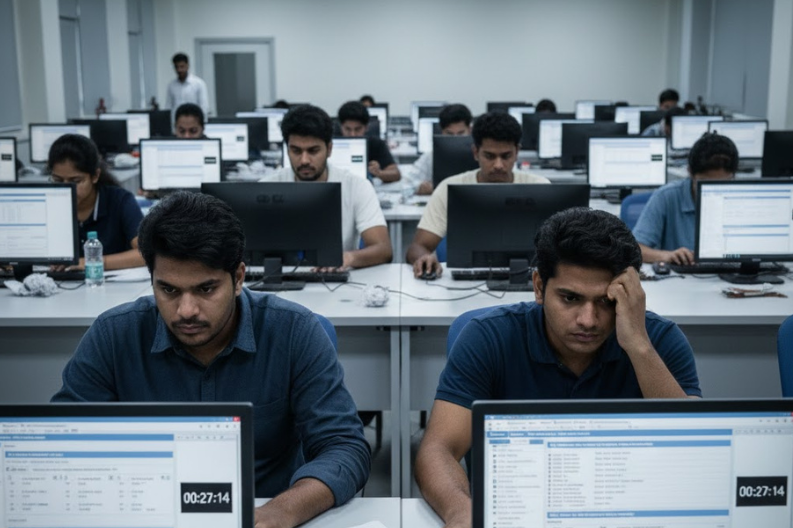
The CAT exam analysis slot 3 reveals that the final session of CAT 2025 proved moderately difficult for most candidates. IIM Kozhikode conducted the Common Admission Test on Sunday, with the third slot running from 4:30 pm to 6:30 pm. Approximately 2.58 lakh students appeared for the exam across all three slots nationwide. Moreover, the overall attendance reached around 86 percent, showing strong participation.
Candidates found the Quantitative Ability (QA) section particularly challenging in the third slot. Experts from Career Launcher noted that QA emerged as the toughest section of the entire day. The section contained 22 questions that required multi-step reasoning under time pressure. Consequently, students estimated that scoring just 5-6 correct answers could secure the 90 percentile mark.
In contrast, the Verbal Ability and Reading Comprehension (VARC) section remained relatively manageable. Students worked through 24 questions in 40 minutes, following the established pattern from previous years. Furthermore, the reading comprehension passages, though occasionally dense, featured straightforward questions. Experts rated this section as easy to moderate, similar to the earlier slots. Additionally, candidates estimated that 8-9 net correct answers would likely place them around the 90 percentile range.
The Data Interpretation and Logical Reasoning (DILR) section presented moderate difficulty throughout the day. This section comprised 22 questions that demanded careful prioritization. Many students highlighted that certain caselets required extended time to solve completely. Therefore, experts suggested that 5-6 solid correct attempts would be sufficient for the 90 percentile. The logical depth and data complexity exceeded expectations for several candidates.
The exam followed the standard structure across all slots. Each session included 68 questions distributed across three sections, with 120 minutes to complete the test. The marking scheme awarded three marks for each correct answer while deducting one mark for incorrect responses. However, unattempted questions carried no penalty, allowing strategic question selection.
Across India, nearly 6,500 candidates appeared for the exam in the tricity region alone. In Mohali, students took the test at two centers located in Sectors 82 and 83. Meanwhile, IIM Sirmaur and IIM Amritsar continue attracting northern region aspirants. Panjab University’s University Business School also remains a preferred choice, with cutoffs expected around the 85 percentile.
Student reactions varied across sections. Himanshi Sharma from PEC Chandigarh shared that the verbal section went smoothly for her. Nevertheless, she found the Math and DI sections tougher than expected. Similarly, Nishant Rathour from Panjab University described the DI section as particularly tricky, though he felt satisfied with his overall performance.
Compared to CAT 2024, this year’s exam showed a slight increase in difficulty. Specifically, DILR emerged as clearly more difficult than last year, while VARC remained marginally easier overall. QA maintained similar difficulty levels but leaned toward the tougher side, especially in the final slot.
CAT 2024 Slot 3 Analysis: कैट एग्जाम स्लॉट 3 एनालिसिस; वीएआरसी कठिन और डीआईएलआर सेक्शन आसान रहा#CAT #CATExam #CAT2024 #CATExam2024
Read more at: https://t.co/IXjsOPQmgk pic.twitter.com/Tc3JnCmero
— Careers360 (@careers360) November 24, 2024
Early estimates suggest that candidates scoring 25-27 net correct answers across all sections in the third slot may reach the 99 percentile. This reflects the overall challenging nature of the session. The results are expected by the end of December, after which shortlisted candidates will proceed to the essay writing and personal interview stages.
The CAT exam analysis slot 3 indicates that smart question selection proved essential for success. Students who managed their time effectively and prioritized accessible questions likely performed better across all sections.
Education
Ludhiana: Guest Faculty Finally Receive 10-Month Salary Arrears
In Ludhiana, a big win for guest faculty members happened recently.
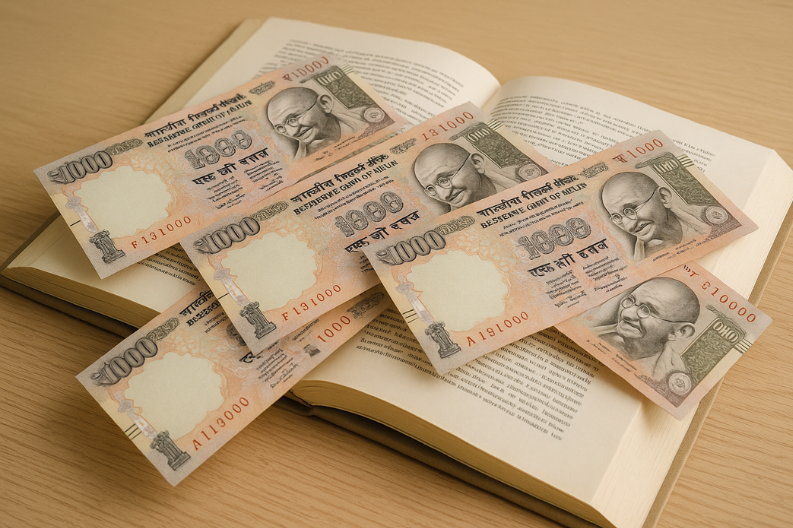
A major relief arrived in Ludhiana after the guest faculty finally receive 10-month salary arrears, bringing joy to hundreds of teachers who had waited almost a year for their pending payments. The Guest Faculty Assistant Professors United Front celebrated this moment and appreciated the government for responding with care and speed.
Leaders of the United Front: Ravinder Singh Mansa, Gursev Singh Patiala, Paramjit Singh, and Muhammad Tanveer, thanked Higher Education Minister Harjot Singh Bains for his quick action. They said his involvement played a key role in clearing the long-pending salaries, which had caused stress for many teachers.
Guest faculty members have supported Punjab’s education system for more than twenty years. They teach in government colleges across the state and continue to guide thousands of students every year. Because of their long contribution, many believe they deserve stronger recognition and fair job security.
In 2022, the Aam Aadmi Party government increased the honorarium for guest professors. This move showed that the state understands its needs and values its service. However, when the government hired permanent professors later, new administrative steps caused delays. As a result, salaries in 25 colleges got stuck, leaving many guest faculty members under financial pressure.
Fortunately, coordinated efforts between the principal secretary and the director of higher education helped end this problem. They removed procedural hurdles and ensured payments finally reached teachers. The United Front also praised the director of higher education for honest and steady leadership during this difficult period.
Teachers across Punjab shared how delays affected their daily lives. Many said they continued teaching with dedication despite financial hardship. Ravinder Singh urged the government to regularize guest faculty services so teachers who served for decades can gain stable positions. He explained that permanent jobs would reflect the true value of their contribution to higher education.
Guest faculty members have shaped the academic journey of countless students. Because of their constant support, many colleges have been able to run smoothly even during staff shortages. Giving them job security would not only help teachers but also improve student learning.
Better treatment of educators leads to better education for everyone. When teachers feel supported, they can focus fully on teaching, guiding, and inspiring young minds. Moreover, regular pay and stable employment help create stronger academic environments.
In conclusion, clearing the pending salary dues marks a positive step for Punjab’s education sector. It shows that the government is willing to listen and respond to teachers’ concerns. Many hope this progress continues, offering more recognition and long-term support, especially after the guest faculty finally receive 10-month salary arrears.
Daily News
What Is an AI Bubble? A Deep, Clear Explanation

Artificial Intelligence (AI) has transformed from a futuristic dream into a booming global industry. Trillion-dollar valuations, skyrocketing chip demand, and rapidly expanding data centers have convinced many that AI will change the world. And in many ways, it will. But beneath the excitement, the rapid pace of investment and financial engineering has raised an important question: Are we living through an AI Bubble?
Just like the dot-com era of 1999 or the US housing bubble of 2008, an “AI Bubble” refers to a dramatic rise in valuations, investments, and expectations-far beyond what real-world fundamentals justify. When these expectations eventually confront reality, the bubble risks bursting.
This article explains what an AI bubble is, how it forms, why it matters, and how investors and industries should view it.
1. Understanding the Core Idea of a Bubble
A “bubble” is an economic condition where asset prices rise sharply because of hype, momentum, and optimism-rather than actual performance and revenue.
In the context of AI:
- Companies are investing heavily in computing power and data centers.
- Investors are pouring money into AI startups at record valuations.
- Tech giants are spending tens of billions on chips, servers, and software.
- Everyone assumes that AI will soon generate massive profits.
A bubble forms when expectations grow much faster than actual, sustainable earnings.
In other words:
A bubble is created when we assume infinite growth based on finite evidence.
2. Why AI Is Attracting Trillions of Dollars
Before calling it a bubble, we must understand why this technology attracts so much money.
AI promises:
- Faster automation
- Better productivity
- New business models
- Breakthroughs in medicine, education, finance, robotics, and more
- Massive time and cost savings for enterprises
Global companies do not want to miss out on a technological shift that could determine the next generation of winners in the economy.
There’s nothing wrong with this. Innovation requires investment.
The issue begins when these investments turn speculative, detached from realistic outcomes.
3. What Creates an AI Bubble?
a. Exponential Investment vs. Slow Monetization
AI models (LLMs, diffusion models, robotics brains) need:
- Immense GPU power
- Large data centers
- Cheap electricity
- High-bandwidth networking
- Engineering teams
- Safety teams
- Product teams
Yet, despite billions spent, AI revenue is still small. Except for a few giants like Google and Microsoft, most companies haven’t found a profitable business model.
If expenses rise faster than revenue, valuations can become artificially inflated.
b. Circular Financing
In a healthy economy, money flows like this:
Investor → Company → Revenue → Profit
But in bubbles, the flow becomes circular:
Investor → Company A → Company B → Company A
Example pattern:
Company A invests in Company B → Company B uses the funds to buy Company A’s products → Company A’s revenue goes up → valuation goes up → investors put more money.
It creates an illusion of demand-when in reality, the cash keeps cycling inside the same loop.
c. Hidden Debt and Financial Engineering
Some companies don’t want to show massive AI-related debt on their balance sheets. So they create:
- SPVs (Special Purpose Vehicles)
- Leasing structures
- Off-balance-sheet borrowing
- Vendor financing arrangements
This makes their main company appear financially healthy, even when huge risks are quietly accumulating elsewhere.
This is similar to the 2008 housing bubble, where mortgage risks were hidden inside complex derivatives.
d. GPU and Data Center Mania
An AI model isn’t just software-it lives inside expensive data centers packed with GPUs. The cost of building these facilities has exploded.
But here is the issue:
- GPUs depreciate quickly
- New generations release faster than before
- The hardware becomes obsolete
- Data center rental rates fluctuate
- Electricity and cooling costs rise
- AI demand is not guaranteed
If the business model does not justify massive capex, the investment becomes risky.
4. Fake Demand and Overreaction to Geopolitics
AI chips also became expensive because geopolitics created artificial scarcity. Restrictions on selling high-end chips to countries like China created a “shortage premium.” Companies started hoarding chips, not because they needed them immediately, but out of fear of missing out.
This artificial demand can collapse quickly once supply stabilizes.
5. AI Hype Across Non-Tech Industries
In the dot-com era, every company rushed to add “.com” to their name.
Today, something similar is happening:
- AI toothbrush
- AI washing machine
- AI refrigerator
- AI hair dryer
- AI fan
- AI cooker
- AI helmet
- AI vacuum cleaner
Most of these “AI-enabled” products do not provide any meaningful intelligence. But companies do this to attract investor money and media attention.
When hype becomes a strategy, a bubble is already forming.
6. Historical Parallels: How Bubbles Usually Work
Dot-Com Bubble (2000):
- Companies grew without revenue
- IPOs doubled on listing day
- “Internet will change everything”
- But most firms had no profits
- Bubble burst when investors demanded real cashflows
Housing Bubble (2008):
- Excessive borrowing
- Hidden risks
- Overconfidence that prices will always rise
- Collapse triggered a global recession
AI Bubble Today:
- Massive capex
- Hidden debt
- Unrealistic expectations
- Companies using AI tag for hype
- Concern that revenue may not catch up soon
7. Is AI Itself a Bubble? Absolutely Not.
Artificial intelligence is real. It is transformative, and it’s here to stay.
But the financial ecosystem around AI may be inflated.
The internet survived the 2000 crash.
Housing still exists after 2008.
But the companies built on unrealistic promises disappeared.
Similarly, AI will remain essential for the next 50+ years-but many AI businesses may not survive the financial correction.
8. When Can an AI Bubble Burst?
Predicting exact timing is impossible.
But bubbles usually burst when:
- interest rates rise
- profitability lags
- capital becomes expensive
- debt accumulates
- growth expectations fail
- competitive pressure increases
- investors look for safer opportunities
If companies cannot turn today’s multi-billion-dollar investments into sustainable revenues, correction becomes inevitable.
9. What Happens If the AI Bubble Bursts?
Short-term impact:
- Stock market correction
- Valuations of AI startups collapse
- GPU and data center prices drop
- Over-leveraged firms face bankruptcy
- Investors lose money on speculative bets
- Hiring slows across tech sectors
Long-term positive impact:
- Weak, overhyped companies disappear
- Strong products survive
- Innovation becomes more disciplined
- Infrastructure becomes cheaper
- AI becomes more accessible
- Industry stabilizes
- Real business models mature
Bubbles clean the ecosystem and leave behind only what truly works.
10. Will AI Still Grow After a Bubble? Yes-Even Faster.
A bubble does not destroy technology. It only destroys bad investments.
After the dot-com crash, the internet entered its golden period.
>After the crypto crashes, blockchain matured and became more regulated.
>After solar energy crashes, renewable companies finally became profitable.
AI will follow the same pattern:
Temporary hype → Bubble → Correction → Sustainable long-term growth
Final Thoughts
An AI Bubble forms when optimism outpaces logic, financial engineering hides risk, and everyone assumes growth will continue forever. But AI itself is not the bubble. The bubble is the money, debt, valuation, and expectation built around the technology.
AI will change the world. But the journey may include a financial reset-one that separates hype from real innovation.
True revolutions don’t collapse after a bubble.
They only get stronger.
-

 City Guide3 years ago
City Guide3 years ago3B2 Mohali Market Shops: Discover 44 Hidden Gems
-

 Entertainment2 years ago
Entertainment2 years agoTop 15 Punjabi Models – Male and Female List
-

 Entertainment3 years ago
Entertainment3 years agoTop 11 Punjabi Comedians of All Time
-

 Jobs4 years ago
Jobs4 years agoTop 20 IT Companies in Mohali
-
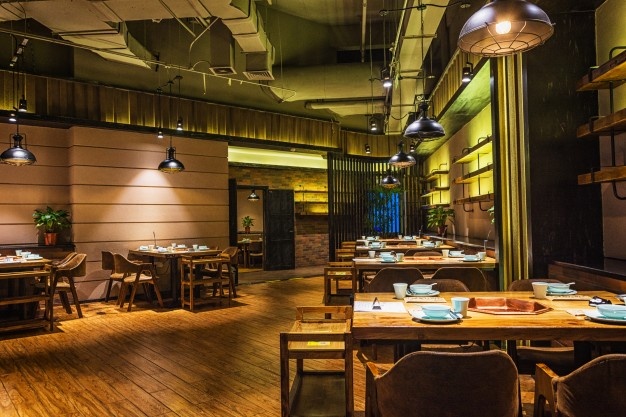
 Food4 years ago
Food4 years ago11 Best Restaurants in Mohali You Must Visit
-

 Property2 years ago
Property2 years agoWho Lives In Homeland Mohali: Punjabi Celebrities, Business People…
-

 Food3 years ago
Food3 years agoTop 15 Cafes in Mohali you must visit
-

 Education2 years ago
Education2 years ago10 Famous Punjabi Writers With A Great Impact On The Literary World
